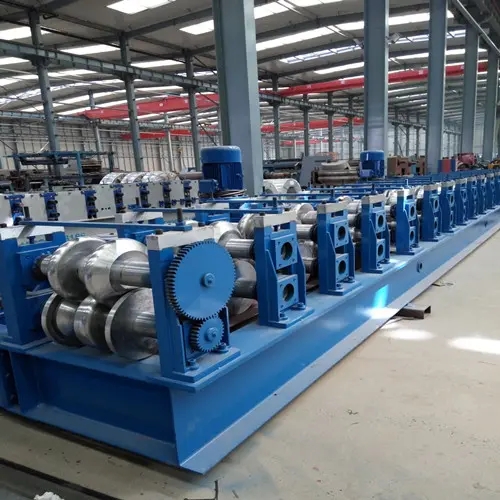
Trapezoid Roof Sheet Roll Forming Machine An Overview
In the rapidly evolving construction industry, the demand for durable and efficient building materials is paramount. One of the most popular choices for roofing solutions in both residential and commercial buildings is trapezoid roof sheets. These sheets combine aesthetic appeal with excellent structural performance, making them ideal for various applications. To achieve the precision and consistency required for these sheets, manufacturers turn to trapezoid roof sheet roll forming machines.
Understanding Trapezoid Roof Sheets
Trapezoid roof sheets are characterized by their unique trapezoidal shape, which provides enhanced strength and rigidity compared to traditional flat sheets. This profile effectively channels water away, reducing the risk of leaks and enhancing the overall longevity of the roofing system. These sheets are typically made of metal, such as steel or aluminum, and are coated with protective finishes to resist corrosion and weathering. Their lightweight nature, combined with high tensile strength, makes them an ideal choice for roofing applications.
The Role of Roll Forming Machines
The production of trapezoid roof sheets involves a precise manufacturing process known as roll forming. This technique consists of gradually shaping flat metal strips into the desired trapezoidal profile through a series of rollers. A trapezoid roof sheet roll forming machine is specifically designed to carry out this process efficiently.
Key Components of a Roll Forming Machine
A trapezoid roof sheet roll forming machine consists of several key components that work together to ensure high-quality output. These include
1. Feeding Mechanism The machine is equipped with a feeding system that ensures the metal strip is fed accurately into the forming rollers. This mechanism is crucial for maintaining the consistency of the sheet’s thickness and profile.
2. Rollers The heart of the roll forming machine is its set of rollers. Each roller is designed to gradually shape the metal strip into the trapezoidal profile. The precise alignment and design of these rollers determine the final dimensions and quality of the roof sheets.
3. Cutting Device Once the sheet has been formed, it must be cut to the desired length. The cutting device, often equipped with a hydraulic system, ensures clean and accurate cuts without damaging the formed sheets.

4. Control System Modern roll forming machines come with advanced control systems that allow operators to monitor and adjust parameters such as speed, feed rate, and sheet length. This contributes to improved precision and efficiency.
5. Stacking and Output Table After the sheets are cut to size, they are typically stacked for easy handling and transport. An output table facilitates this process, allowing for the organized collection of finished products.
Advantages of Using a Roll Forming Machine
Investing in a trapezoid roof sheet roll forming machine offers numerous benefits for manufacturers
- High Production Efficiency Roll forming is a continuous process, meaning that a significant number of sheets can be produced in a relatively short period, enhancing productivity.
- Precision and Consistency The automated control systems ensure high precision in dimensions and thickness, leading to consistent product quality.
- Reduced Material Waste With precise cutting and shaping, roll forming minimizes scrap material, making the process more economical and environmentally friendly.
- Versatility Roll forming machines can be adapted to produce various profiles and sizes, allowing manufacturers to cater to different market needs.
- Durability of Equipment With proper maintenance, roll forming machines are robust and can operate for years, making them a worthwhile investment.
Conclusion
The trapezoid roof sheet roll forming machine plays a crucial role in the construction industry by enabling the efficient production of high-quality roofing materials. Its ability to produce durable and aesthetically pleasing roof sheets makes it an essential tool for manufacturers looking to meet the growing demand for innovative building solutions. As the construction landscape continues to evolve, the importance of advanced machinery like the roll forming machine cannot be overstated, ensuring that builders have access to the best materials for their projects.